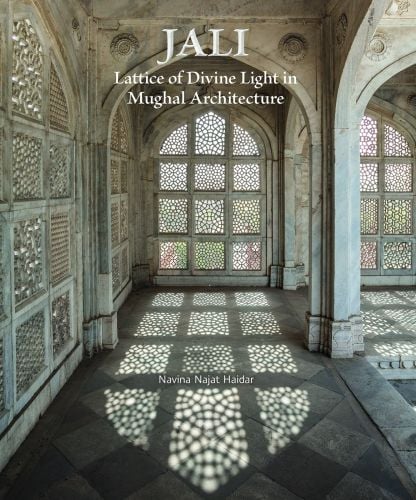
Jali
Lattice of Divine Light in Mughal Architecture
- Documents the special architectural element of carved and perforated screens in South Asia
- Features lavishly-produced illustrations of more than 200 jalis across India
- Traces examples from seventh-century examples to those designed by global contemporary artists
- Comprehensive study of the exquisitely crafted screens from the Gujarat Sultanate to Mughal jalis, across Rajasthan and central India and, further south, to Deccan
A jali is a perforated or latticed stone screen, with ornamental patterns that draw on the compositional rhythms of geometry and calligraphy. In the parts of India, western Asia and the Mediterranean where solar rays are strongest and brightest, ustads (or master artisans) were able to evolve an aesthetic language of light, giving it form and shape through lattices of stone and other materials. Jalis share a common aim of bringing filtered light into enclosed spaces, while providing protection and privacy.
The expansive volume covers more than two hundred jalis across India, from the temple-inspired designs of the Gujarat Sultanate to imperial symbolism and Sufi allusions in Mughal jalis, the innovations and adaptations of jalis across Rajasthan and central India and, further south, calligraphy in pierced stone in the Deccan. With contributions by Mitchell Abdul Karim Crites, George Michell, and Ebba Koch, this lavishly illustrated publication reveals the poetry etched in these stone screens.
- Publisher
- Mapin Publishing
- ISBN
- 9789385360749
- Published
- 9th Nov 2023
- Binding
- Hardback
- Territory
- USA & Canada
- Size
- 9.49 in x 11.61 in
- Pages
- 268 Pages
- Illustrations
- 246 color
Our Catalogs
Browse Our Books
Please log-in or create an account to see your recent items.